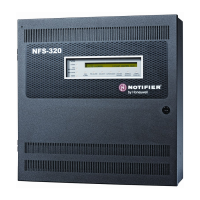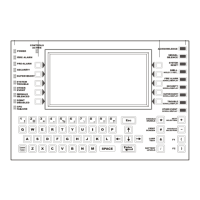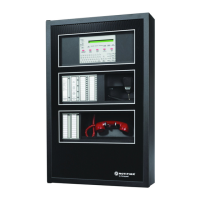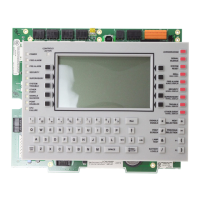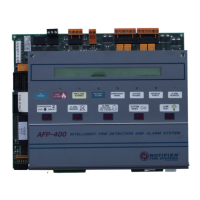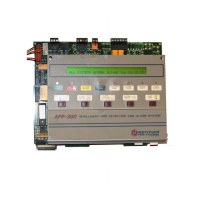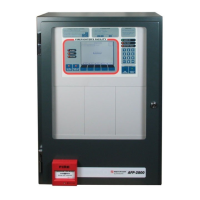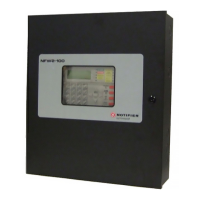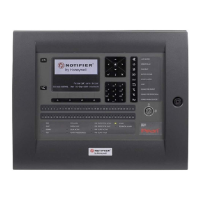
Do you have a question about the Notifier NFS-320C and is the answer not in the manual?
| Brand | Notifier |
|---|---|
| Model | NFS-320C |
| Category | Control Panel |
| Language | English |
Alerts the reader to important safety information, procedures that could cause errors, damage, or injury.
Guides on selecting a suitable location, unpacking, and initial checks before installing the fire alarm system.
Provides a step-by-step checklist for installing, wiring, and testing the NFS-320/E/C system.
Provides instructions for securely mounting the NFS-320/E/C backbox to a wall, including location guidelines.
Covers primary AC power and secondary DC battery connections, including safety warnings and overview of connections.
Step-by-step guide for connecting the primary AC power to the control panel's TB1 terminal.
Provides a checklist and cautions for verifying AC power status after connection, ensuring correct indicator lights.
Details the process for installing batteries into the cabinet or an external box, and connecting them to the power supply.
Explains the use of TB10 terminals for resettable and non-resettable DC power outputs for devices like smoke detectors.
Describes the DC power output connections on TB2 for accessories, including 24 VDC and 5 VDC outputs.
Covers the four Notification Appliance Circuits (NACs) for configuring Style Y or Z, and their use in releasing circuits.
Mandates separation of power-limited and nonpower-limited wiring within the cabinet as per UL requirements.
Covers SLC wiring requirements for intelligent and addressable devices, including styles, distance, and capacity.
Provides typical wiring diagrams for using UDACT/UDACT-2 with the control panel for Central or Remote Station systems.
Describes connecting the NFS-320/E to a compatible receiving unit for automatically transmitting signals.
Details using the control panel as a combination Fire/Security system, including programming and wiring security devices.
Covers agent release or preaction/deluge control applications, detailing NFPA standards and programming for releasing zones.
Details wiring releasing devices to the control panel's NAC terminals, covering circuit requirements and type codes.
Explains connecting releasing devices to the FCM-1 module, covering current limits, power supply, and circuit requirements.
Shows typical connections for wiring releasing devices to the FCM-1-REL module for Style Y (Class B) and Style Z (Class A) applications.
Illustrates typical connections for an NBG-12LRA Agent Release-Abort Station, including wiring to FACP and modules.
Mandates a complete operational test after installation and modifications to verify compliance with NFPA standards.
